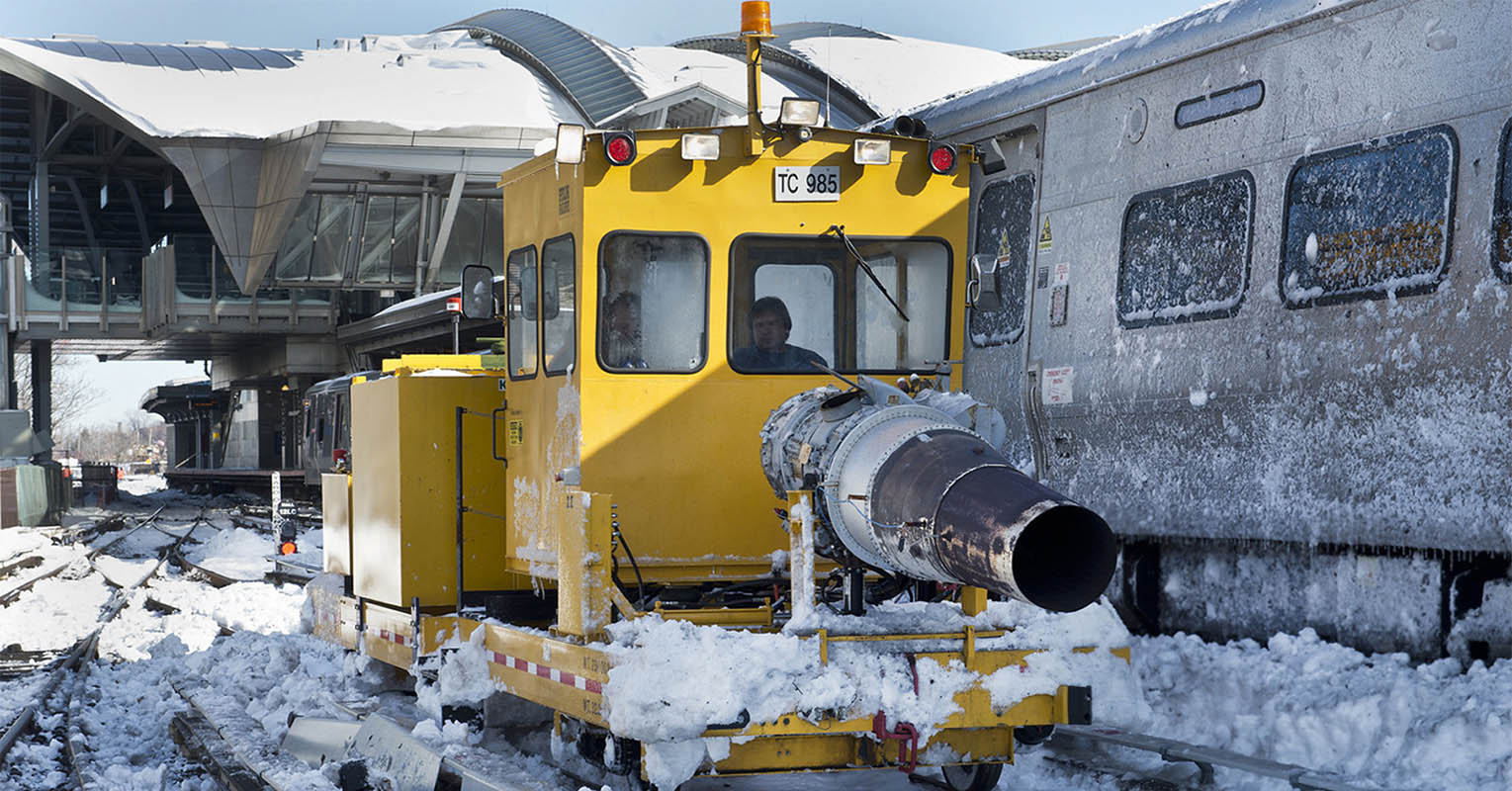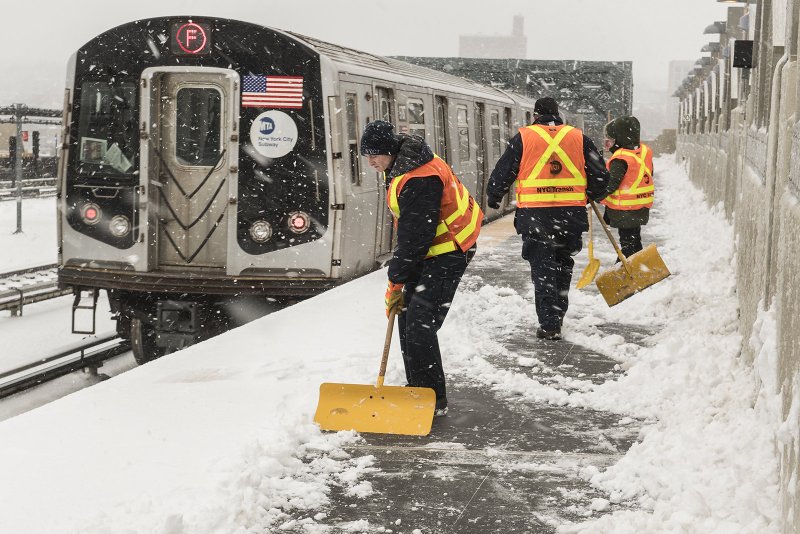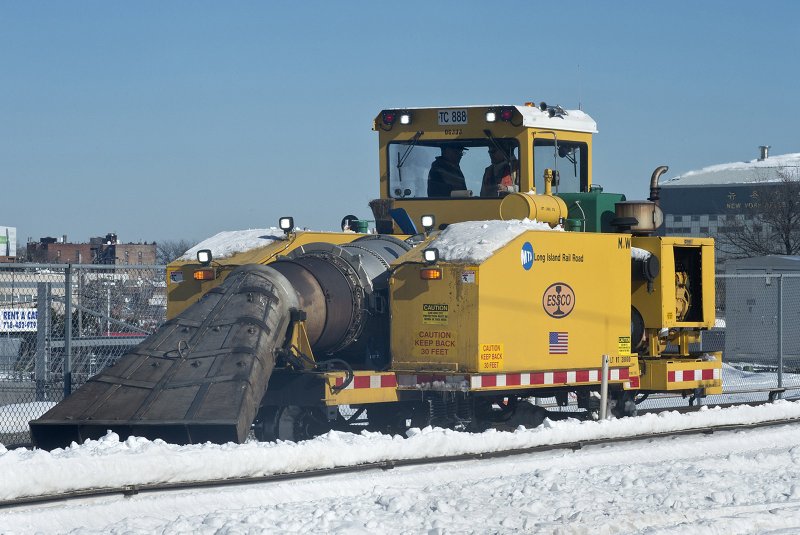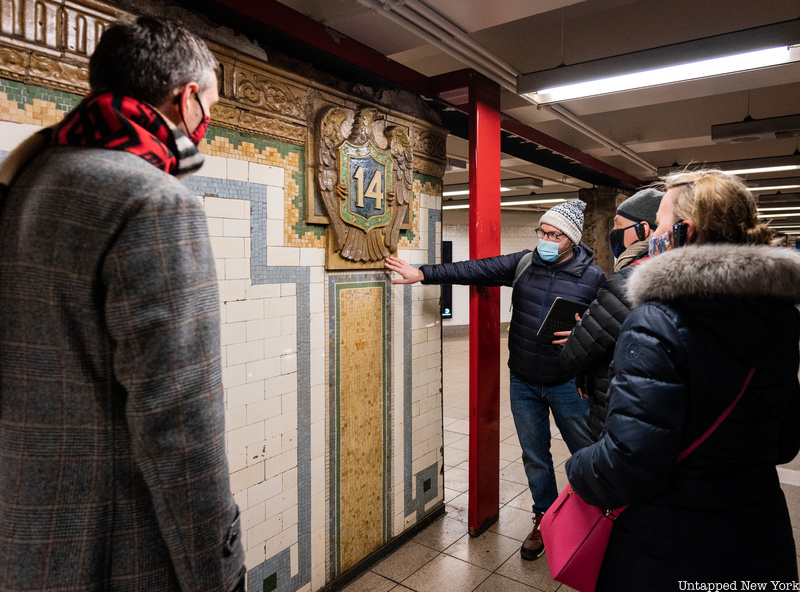Ever wonder how the New York City subway and the regional train lines like Long Island Railroad and Metro-North prepare for storms, clear the tracks from snow, and keep the system going? The answer includes a fleet of specialized equipment designed for fighting snow, including snow blowers, throwers and plows, along with traditional shoveling.
New York City’s subway system runs in a lot of extreme weather conditions and its subway cars are designed to withstand high temperatures and freezing ones, snow, sleet, and rain. In an exhibition at the New York Transit Museum on the iconic Redbird subway cars, curator Jodi Shapiro told us, “New York is not an easy transit environment. Trains go many many miles, they’re running in weird weather conditions…All of our transit vehicles, not just subway cars, but buses and commuter rail, also have to withstand these extremes.” The 221 miles of outdoor tracks of the New York City subway can be particularly vulnerable, especially in south Brooklyn, the Rockaways, and the north Bronx. However, efforts have been made to shore up those areas since a major snowstorm back in December 2010, when 400 passengers got stuck on the A train at Aqueduct Racetrack for more than 7 hours.
The goal, in any storm, is to keep the system operating. At a press conference in 2020, MTA Chairman and CEO Patrick Foye said, “The MTA has comprehensive plans in place for weather events like the upcoming one, so we can handle whatever comes our way. We’ve activated our 24/7 command center to closely monitor the storm. Personnel and equipment are at the ready so service can continue as safely and reliably as possible through the storm and its aftermath. Workers will be ready to spread salt, and clear platforms of snow and ice, and keep signal switches and the third rail operating safely. Crews are also on standby to remove downed trees that fall across tracks and attend to any other weather-related challenges.”
In the same press conference, Sarah Feinberg, Interim President of MTA New York City Transit stated that they work closely with the NYC Department of Sanitation and other partners “to ensure that we can keep trains and buses running smoothly during the storm. We’ll be using snow throwers, snow blowers, and other de-icing equipment at locations citywide to protect our system. Our stockpile is sufficient. We have on hand 236,000 pounds of de-icing material, 66,000 sandbags, eight truck-mountable snow plows, and 56 box trucks…The NYC Transit Incident Command Center will coordinate our overall snow-fighting efforts and we’ve upgraded a tool for tracking field reports on snow removal and station conditions, as well as a database of essential resources to enable better response times.” NYC Transit is currently planning for a “Plan Five event,” the highest level of snow the system plans for. Feinberg spoke about remaining flexible, adapting to the evolving weather conditions, and limiting service on the outdoor tracks if need be “to avoid straining trains.”
Each transit line has equipment specific to the storm system needs of its system, although some pieces of equipment are shared between them. Subway cars and equipment get relocated out of outdoor train yards in advance of a storm so they don’t get stuck.
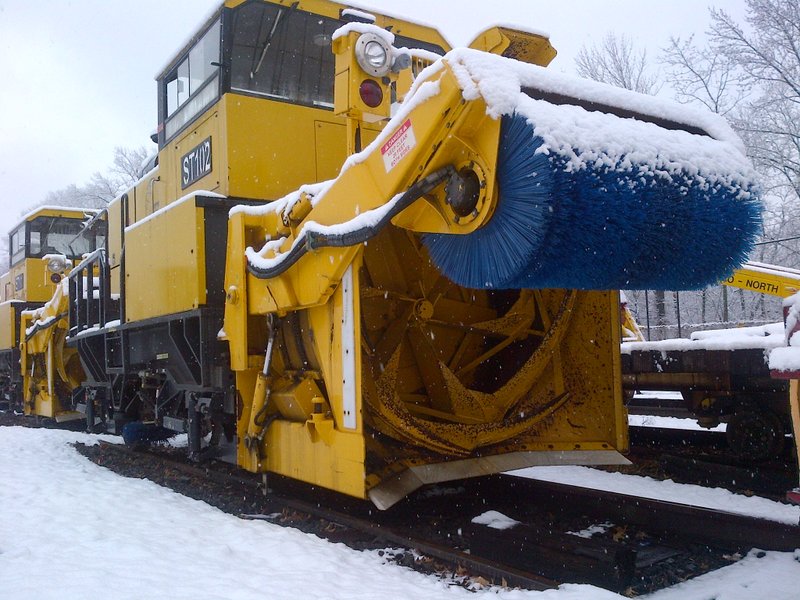
In addition to what Feinberg mentioned, the MTA snow equipment includes 259 3rd rail heaters, 249 snow melting devices at switches, 2,770 ice scraper shoes, 218 jet engine powered blowers/snow melters, 129 portable snowblowers/snow throwers,126 chain saws, 60 emergency response vehicles or road service trucks, 11 de-icer train cars, 43 forklifts, 42 torches, 14 dump trucks, 6 front loaders, 5 excavators, 4 debris clearing trains, and 3 backhoe loaders. The same 2010 storm prompted the MTA to acquire its growing squadron of snow throwers and other snow-fighting machinery.
The diesel-powered snow thrower (above) has a 6-foot cylindrical blue brush that pulls snow into a tube and can blast it up to 200 feet away. The snow throwers can remove up to 3,000 tons of snow per hour. The snow throwers get positioned in advance of a storm on exposed, open-cut subway lines. Jet-engine snow blowers also do additional clearing, often in rail yards.
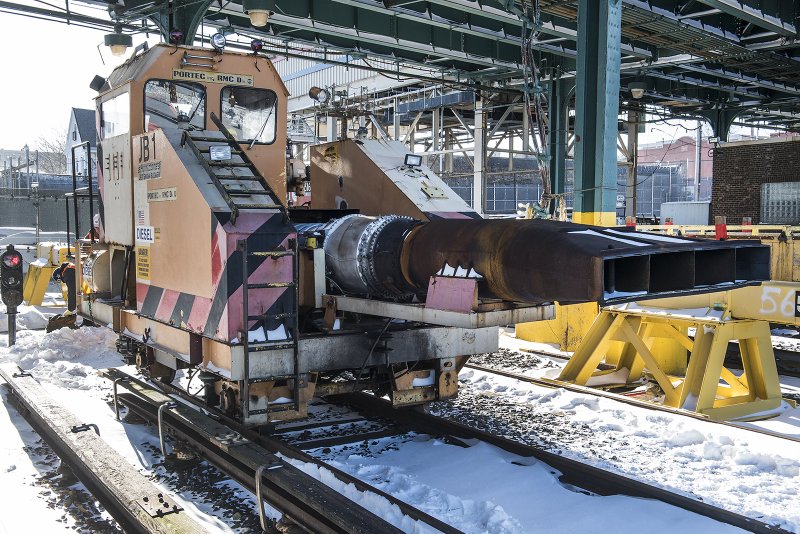
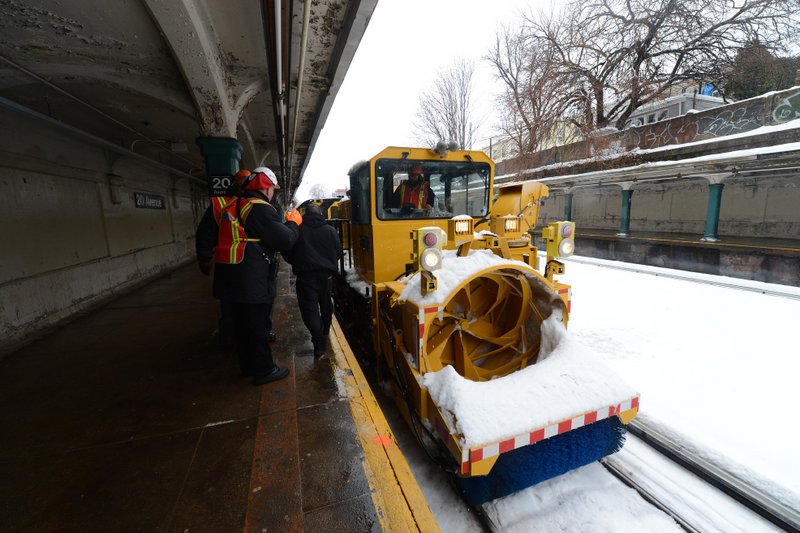
In addition, the third-rail heaters as well as heating elements are placed at specific track locations and switch locations known to be prone to icing. De-icer cars and trains are equipped with tanks that spray de-icing fluid on the third rail and have “scraper shoes” that can remove ice. And beyond equipment, old fashioned shoveling is also done on subway tracks.
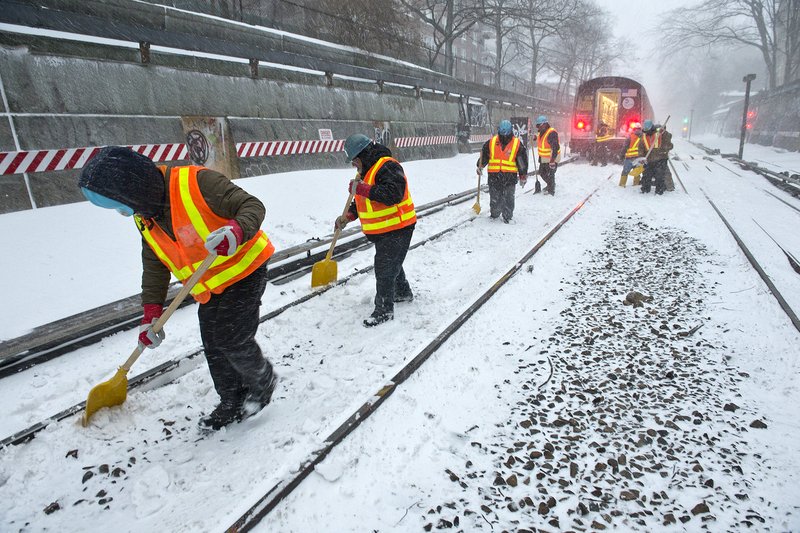
This year, the Long Island Railroad has over a million pounds of de-icing material, more than 22,000 linear feet of third rail heaters, 167 portable generators, and 250 cars equipped with ice scrapers and contact shoes. As of 2011, the Long Island Railroad already had GPS trackers on its snow-fighting equipment and its service trucks, which assists in efficient resource deployment. “We know that we cannot control mother nature, but we can minimize service impacts and recover more quickly from storms by being prepared as possible,” said Long Island Railroad President Phil Eng yesterday.
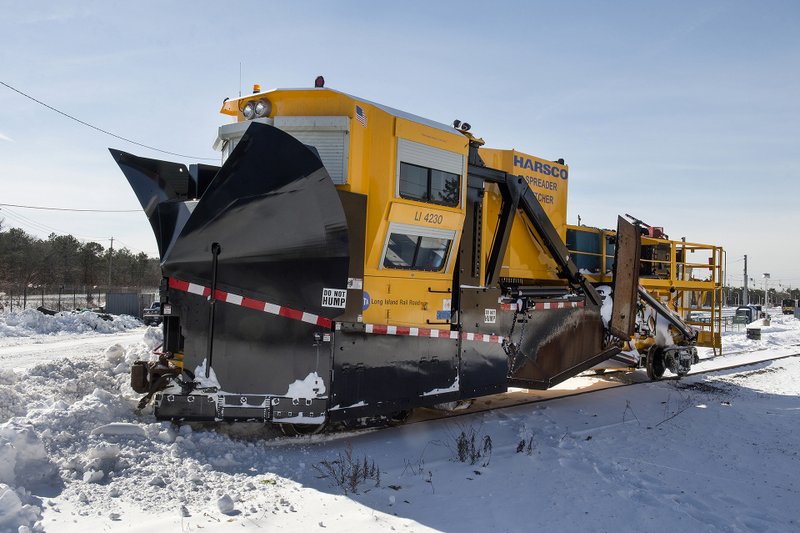
Since 2018 when the Long Island Forward Plan was announced, the railroad has installed 100 snow switch covers, insulated 38 switches, installed more than 3000 doorway threshold plates, and replaced more than 300 utility poles along the track. In addition, the railroad has 262 portable snow blowers/throwers, 235 chainsaws, 28 front loaders, 25 cubic yards of sand, 25 torches, 17 box trucks, 10 dump trucks, 8 truck-mountable snow plows / salt spreaders, 4 de-icer trains, 5 excavators, 3 backhoe loaders, 3 cold-air rail snow blowers / throwers and 2 forklifts. One of the spreader-ditcher plows has been nicknamed “Darth Vader” for its shape (above).
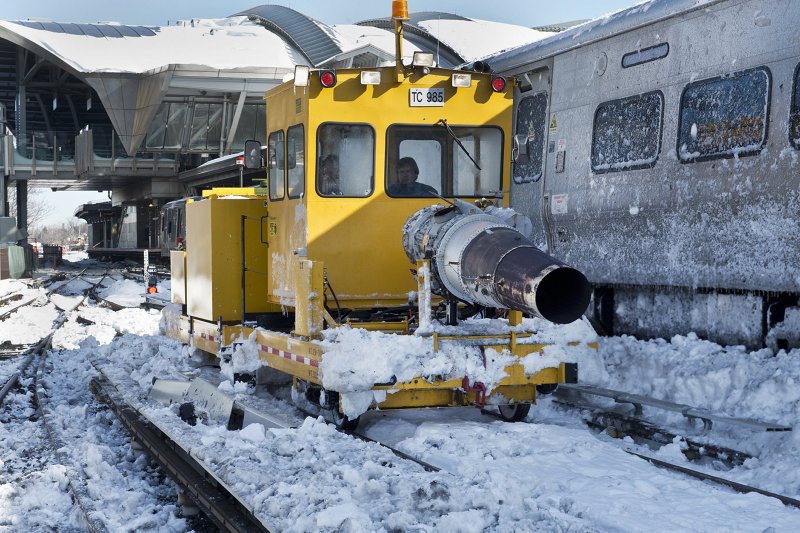
Meanwhile, Metro-North has 220 portable snowblowers, 70 truck mountable snow plows/salt spreaders and, 635 track-switch heaters. For this storm, they’ve installed 1,250 third rail snow shoes on all electric trains to scrape off third rails, and there are an additional 2,000 of these snow shoes in the stockpile for use during the rest of this winter season. In addition, they have 196 portable generators, 146 chainsaws, 21 front loaders, 20 backhoes, 20 excavators, 6 dump trucks, 6 cold-air rail snow blowers / throwers, 3 emergency response trailers and 2 rail-bound snow brooms.
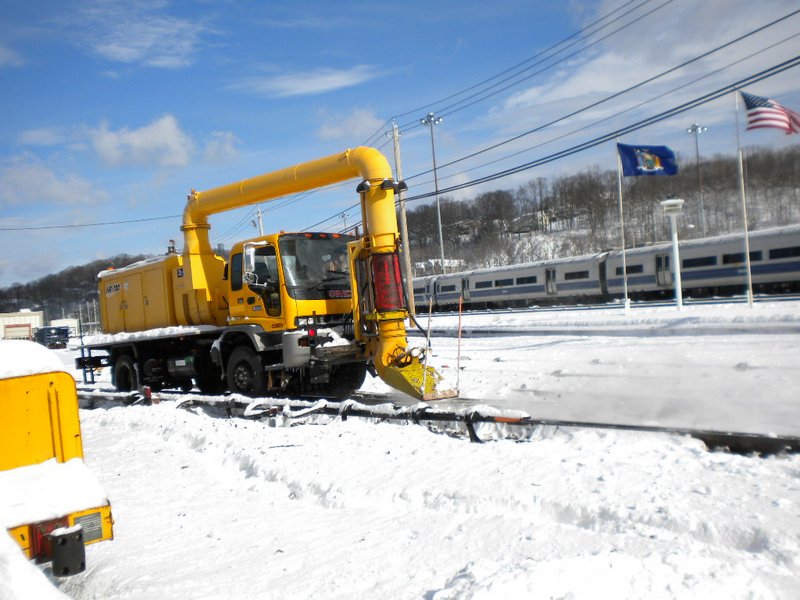
But even all the specialized vehicles can get piled upon with snow, and when that happens, transit workers pull out their shovels and manually remove it. Inside the stations, the platforms get dropped with salt and the platforms and stairs are cleared with snow. But sometimes the rate of snowfall overwhelms the stations from the stairwells and massive snowdrifts start to pile up. All the speakers at yesterday’s press conference from NYC Transit, Metro-North and Long Island Railroad encouraged New Yorkers to stay home if travel was not necessary.
The effectiveness of snow removal depends on many factors, including on-going capital investments, agency coordination, pre-deployment of equipment and labor, communication to customers, and other factors.
Header photo by Marc A. Hermann / MTA New York City Transit






